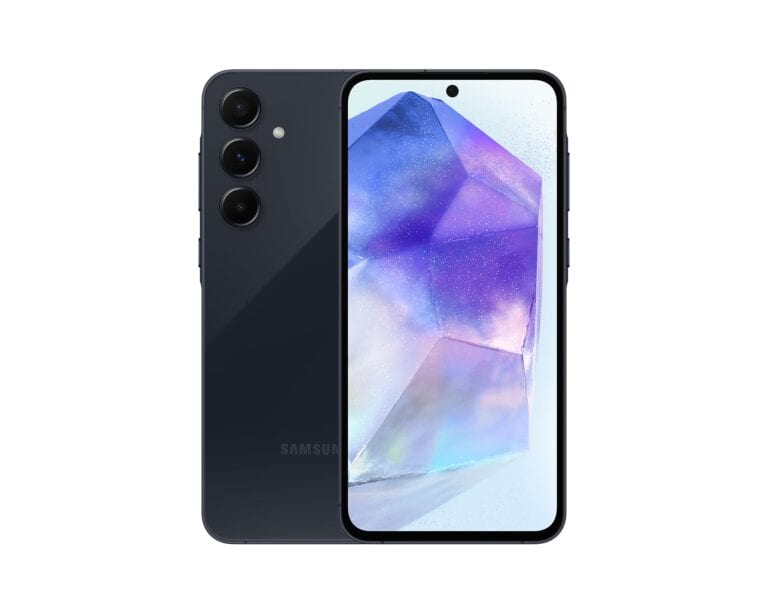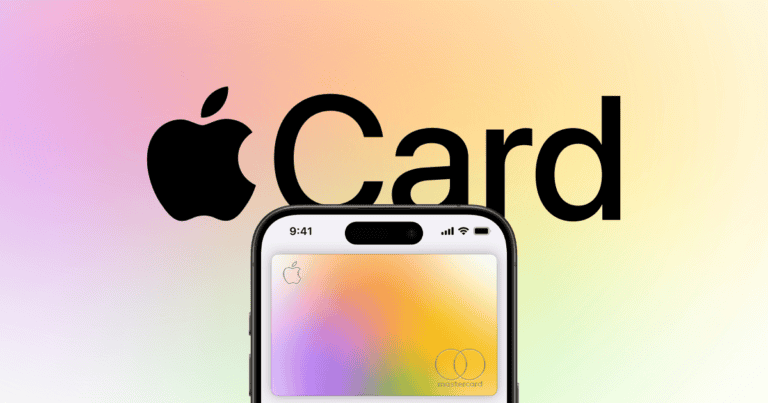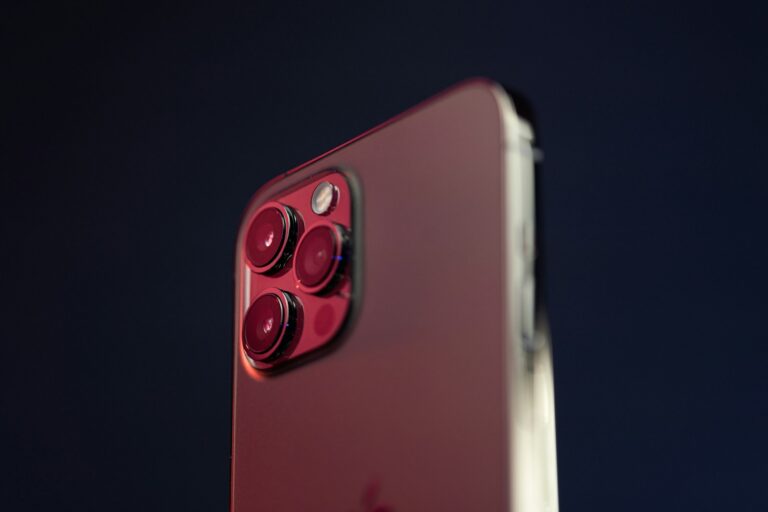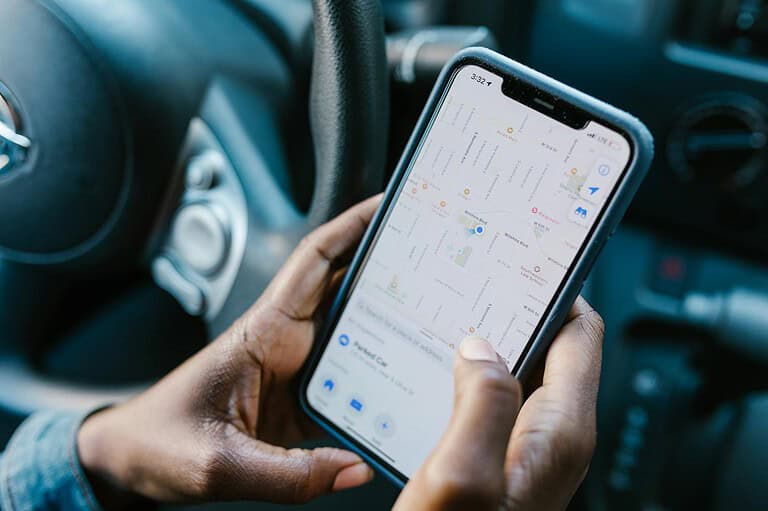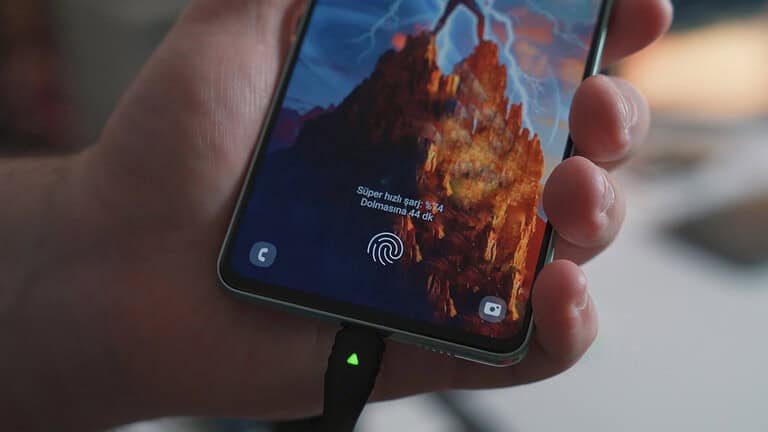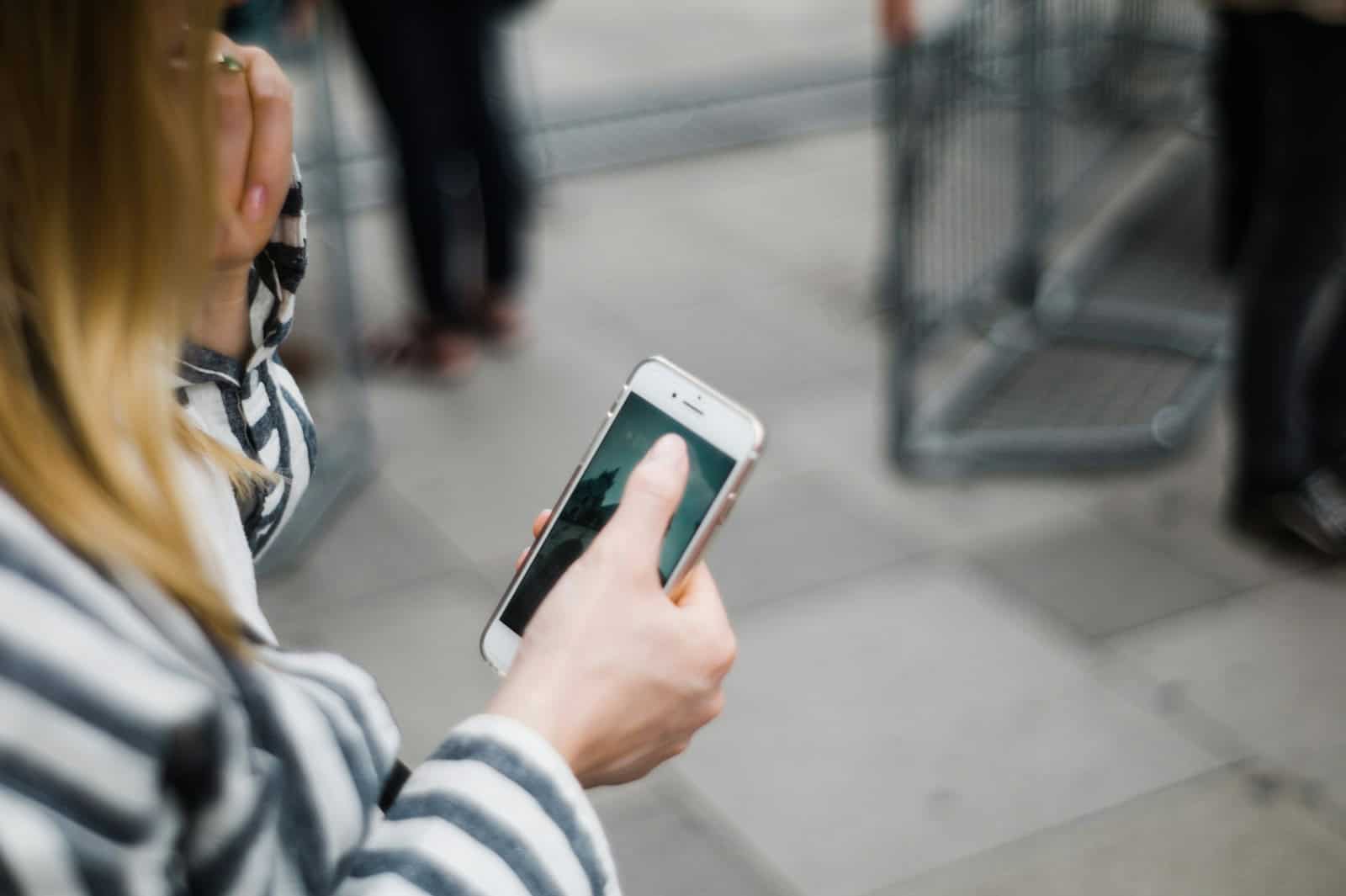
Losing your phone or having it stolen can be a stressful experience that affects both your daily routine and your privacy. Your smartphone contains personal information, photos, and access to various accounts that could be compromised if your device falls into the wrong hands. Taking proactive steps to protect your phone from theft and setting up security features can save you from the headache of dealing with a lost or stolen device.
Modern phones come with built-in security features like Stolen Device Protection for iPhone users and Remote Lock for Android users. These tools let you track, lock, or even erase your device remotely if it’s lost or stolen. You can also take simple physical precautions, such as keeping your phone in your front pocket and staying alert when using it in public places, especially near transit exits.
How to Protect Your Phone from Loss or Theft
Smartphones hold valuable personal, financial, and work data, making them a prime target for theft. Taking a few proactive steps can greatly reduce the risk of losing your device or having it stolen — and help you recover it if it happens.
Use a Strong Screen Lock
- Set a complex passcode instead of a simple 4-digit PIN.
- Use Face ID or Touch ID for quick but secure access.
- Avoid patterns or codes that are easy to guess (like birthdays).
Enable Find My iPhone
- Go to Settings → [Your Name] → Find My.
- Turn on Find My iPhone and Find My network.
- Enable Send Last Location so your phone reports its location before the battery dies.
This allows you to locate, lock, or erase your phone remotely.
Keep Software Updated
- Install the latest iOS updates to patch security vulnerabilities.
- Turn on Automatic Updates in Settings → General → Software Update.
Be Mindful in Public
- Avoid using your phone openly in high-theft areas.
- Keep it in a front pocket, zipped bag, or crossbody strap.
- Use wired or wireless headphones to answer calls discreetly.
Use a Secure Case or Strap
- A case with a wrist strap or lanyard can prevent accidental drops or snatches.
- Rugged cases also protect against damage if dropped.
Protect Your Data
- Turn on Data Protection (enabled automatically with a passcode).
- Use two-factor authentication for Apple ID and important accounts.
- Regularly back up your phone to iCloud or a computer.
Avoid Leaving Your Phone Unattended
- Don’t leave it on tables in cafés, gyms, or public transport.
- If you must set it down, keep it within arm’s reach and in sight.
Consider Theft-Deterrent Settings
- Enable SIM PIN to prevent a thief from using your SIM in another device.
- Use Lockdown Mode if you suspect targeted digital attacks.
If Your Phone Is Lost or Stolen
- Use Find My iPhone to locate or mark it as lost.
- Contact your carrier to suspend service.
- Report the loss to local authorities with your device’s serial number or IMEI.
- Erase your phone remotely if recovery seems unlikely.
Taking these precautions won’t just help protect your phone — they’ll also safeguard your personal information and make recovery more likely if it’s lost or stolen.
Key Takeaways
- Enable security features like remote tracking, locking, and data wiping before you need them.
- Store your phone in secure locations like front pockets and remain alert when using it in public spaces.
- If your device is stolen, immediately contact your carrier to suspend service and report the theft to authorities.
Understanding the Risks of Phone Loss and Theft
Phone theft and loss present serious security threats that can impact your daily life, finances, and personal information. The risks go beyond just losing the device itself.
Prevalence of Phone Theft
Phone theft remains a common crime in many urban areas. According to recent trends, smartphones are targeted in over 40% of all robberies in major cities. These thefts often happen in public places like restaurants, public transportation, and busy streets.
The risk varies by location, but no area is completely safe. Thieves specifically target newer models and high-end devices that can be resold quickly.
Common Phone Theft Scenarios:
- Pickpocketing in crowded areas
- Grab-and-run thefts from tables at cafes
- Theft from gym lockers or changing rooms
- Distraction thefts where criminals work in teams
The financial value of smartphones makes them particularly attractive targets, with some models worth hundreds of dollars on the black market.
Consequences of Stolen Phones
When your phone is stolen, the immediate financial loss of the device is just the beginning. Thieves can quickly rack up charges on your accounts or make unauthorized purchases through saved payment methods.
Financial fraud is a major concern when your phone falls into the wrong hands. Criminals can access banking apps, digital wallets, and stored credit card information.
Your personal and work communications become vulnerable. For many people, phones contain:
- Email accounts with sensitive information
- Text messages with personal details
- Work documents and contacts
- Access to cloud storage
The disruption to your daily life can be significant. You’ll need to report the theft, suspend service, and contact your mobile carrier to prevent unauthorized usage.
Personal Information Vulnerability
Your smartphone contains a treasure trove of personal information that can put you at risk for identity theft. Photos, contacts, messages, and browsing history reveal intimate details about your life and habits.
Stored passwords and auto-fill features can give thieves access to your:
- Social media accounts
- Shopping websites
- Banking applications
- Medical information
Even with a lock screen, determined criminals can use specialized tools to bypass security measures and extract your data. Lost or stolen devices represent a serious data security threat to both individuals and organizations.
The risk extends beyond the phone itself. Many apps connect to other accounts and devices, creating a potential domino effect of compromised accounts if one device is breached.
Essential Features for Phone Security
Modern smartphones come with powerful security tools that can help protect your data if your device is lost or stolen. These built-in features can lock down your phone, track its location, and even erase your data remotely if needed.
Find My Device Functionality
Both Android and iPhone devices have built-in tracking features that help you locate your missing phone. On Android, the Theft Detection Lock automatically secures your device when suspicious activity is detected. This feature works even when your phone is offline.
To set up this protection:
- Go to your phone’s Settings
- Select Security & Privacy
- Enable Find My Device
You can access Find My Device through a web browser on any computer. This lets you see your phone’s location on a map in real-time. The service can also make your phone ring at full volume, even if it’s set to silent mode.
For iPhone users, the Find My app works similarly but adds extra protection with Stolen Device Protection that increases security when your phone is away from familiar locations like home or work.
Activation Lock and Lost Mode
When your phone goes missing, “Lost Mode” becomes your first line of defense. This feature locks your device with your passcode and displays a custom message with your contact information on the lock screen.
For iPhone users:
- Lost Mode disables Apple Pay immediately
- Notifications won’t appear on the lock screen
- Your phone continues tracking and reporting its location
Android’s equivalent, called Mark as Lost, provides similar protection. Both systems are tied to activation lock technologies that prevent thieves from erasing and reactivating your device without your password.
To maximize this protection, you should:
- Set up a strong passcode (not just 1234 or 0000)
- Enable biometric authentication like fingerprints or face recognition
- Add alternate contact info to your lock screen
Remote Wipe Capabilities
If you’re certain your phone won’t be recovered, remote wiping gives you the power to erase all personal data. This feature works even when your device is offline in newer models.
Before using this option:
- Try locating your device first
- Back up important data regularly
- Consider if you have irreplaceable photos or files
When you trigger a remote wipe, your phone will delete all personal information, including:
- Photos and videos
- Messages and emails
- Passwords and accounts
- Apps and their data
This nuclear option ensures that your private information stays private. Most remote wipe features work through the same interface as Find My Device or Find My iPhone, making it easy to access when needed.
Protective Measures Against Phone Loss and Theft
Protecting your smartphone requires a multi-layered approach that combines strong security settings, regular maintenance, and smart backup strategies. These measures will help keep your personal data safe even if your device falls into the wrong hands.
Using Strong Passwords and Authentication
Setting up strong protection for your phone is your first line of defense against unauthorized access. Always use a strong passcode rather than simple patterns or 4-digit PINs. Longer passcodes with a mix of numbers, letters, and symbols provide better security.
Enable biometric authentication like fingerprint or face recognition for convenience without sacrificing security. These features make your phone more secure while keeping it easy to use.
Multifactor authentication adds an extra security layer to your accounts and should be enabled wherever possible. This requires something you know (password) and something you have (your phone or authentication app).
For iPhone users, Apple’s Stolen Device Protection feature adds security when your device is away from familiar locations like home or work. This prevents thieves from making critical account changes even if they know your passcode.
Android users can benefit from Theft Detection Lock, which uses device sensors to recognize potential theft attempts and automatically lock your screen.
Keeping Software and Apps Up-to-Date
Regular updates are crucial for maintaining your phone’s security. Set your device to install operating system updates automatically to ensure you have the latest security patches.
Review app permissions regularly. Many apps request access to your location, contacts, or camera when they don’t need it. Limit these permissions to only what’s necessary for the app to function properly.
Delete unused apps from your device. Each app represents a potential security vulnerability, especially if it’s no longer receiving updates from its developer.
Enable remote tracking features like Find My iPhone (iOS) or Find My Device (Android). These services can help you locate your phone if lost and allow you to remotely lock or erase it if necessary.
Regularly Backing Up Data
Set up automatic backups to protect your photos, contacts, and important documents. Both iCloud and Google offer cloud storage options that can back up your data seamlessly in the background.
Back up your files regularly to a secure storage space. This ensures you won’t lose precious memories or important information even if your device is never recovered.
Consider what data is most important to you. Photos and videos are often irreplaceable, while apps can be re-downloaded. Make sure your backup strategy prioritizes what matters most.
Test your backups occasionally by restoring some files to make sure the process works. Nothing is worse than discovering your backup system wasn’t working when you need your data most.
For additional security, consider using encrypted backup solutions that provide an extra layer of protection for your most sensitive information.
Smart Habits to Prevent Phone Loss and Theft
Keeping your smartphone safe requires more than technical solutions. Your daily habits play a crucial role in protecting your device from opportunistic thieves and accidental loss.
Being Aware of Your Surroundings
Always pay attention to your environment when using your phone in public. Thieves often target distracted people who are absorbed in their screens. Keep your head up while texting or scrolling, especially in crowded areas like public transportation, busy streets, or tourist attractions.
Be particularly cautious when traveling in unfamiliar places. Many smartphone thefts happen when you’re in transition—getting on or off buses, trains, or when entering crowded venues.
Consider using earbuds instead of holding your phone to have conversations in public. This keeps your expensive device less visible and reduces the chance of a snatch-and-grab theft.
Periodically scan your surroundings for suspicious behavior. If someone is paying unusual attention to you or your belongings, move to a more secure location or put your phone away.
Avoiding Risky Behaviors and Locations
Never leave your phone unattended, even for a moment. Avoid placing your phone on restaurant tables, bar counters, or any public surface where it could be easily snatched.
When dining at outdoor cafés or restaurants, sit away from pedestrian walkways. Thieves can quickly grab phones from tables near sidewalks and escape into crowds.
Be extra vigilant in known high-theft areas such as tourist attractions, crowded events, and nightlife districts. Consider keeping your phone completely out of sight in these locations.
Limit phone use when walking alone at night or in isolated areas. Not only does this make you less of a target, but it also helps you stay more aware of potential safety threats around you.
Securing Phones in Public Spaces
Use inside pockets rather than back pockets or external compartments when carrying your phone. Front pockets or zippered bags provide better security against pickpockets.
Consider using a crossbody phone case or lanyard in high-risk situations. These accessories make it harder for thieves to snatch and run with your device.
When at the gym, beach, or pool, never leave your phone with unattended belongings. Either keep it on your person or use a secure locker. Water-resistant phone pouches can help you keep your device with you even in unlikely places.
In offices or schools, avoid leaving your phone on desks when stepping away. A moment’s inattention is all it takes for an opportunistic thief to commit fraud with your stolen phone.
Post-Theft Actions and Damage Control
If your phone gets stolen, taking immediate action can prevent further damage. Quick responses help protect your personal information and reduce the risk of identity theft or financial fraud.
Immediately Reporting the Theft
Call the police right away to report your stolen phone. File an official police report and request a copy for your records – you’ll need this when dealing with your insurance company or mobile carrier.
Contact your mobile carrier immediately to suspend service. This prevents thieves from using your device on the network or racking up charges on your account. Most carriers can also add your device to a blocklist that makes it harder to reactivate.
Use tracking tools like Find My iPhone or Find My Device for Android to locate your phone. These services allow you to:
- Track your phone’s location
- Play a sound remotely
- Lock your device
- Erase all data as a last resort
Contacting Your Bank and Service Providers
Notify your bank and credit card companies right away if you had payment apps or banking information on your device. Request new cards if your digital wallet was on your phone, and check recent transactions for any suspicious activity.
Monitor your accounts closely for the next few months. Set up fraud alerts with the major credit bureaus to get notified of any new credit applications in your name.
Contact any services with sensitive information on your phone. This includes:
- Healthcare providers
- Insurance companies
- Investment platforms
- Tax preparation services
Ask these providers to add notes to your accounts about the potential security breach.
Changing Online Account Passwords
Reset your Google account password immediately if you use Android. For iPhone users, change your Apple ID password. Then sign out of all devices to force the thief off your accounts.
Use a different device to change passwords for all important accounts, especially those with:
- Financial information
- Personal photos
- Private messages
- Work-related data
Prioritize accounts that didn’t have two-factor authentication. Enable this security feature on all accounts that offer it, using a method other than SMS since you no longer have your phone.
Remember to update any password managers you were using. Check your email accounts for password reset notifications you didn’t initiate – these could indicate attempts to access your accounts.
Legal Recourse and Reporting a Stolen Device
When your phone goes missing, taking swift legal action can help recover your device and protect your personal information. Proper documentation and understanding your rights are essential steps in this process.
Filing a Police Report
If your phone is stolen, reporting it to local police should be one of your first steps. This creates an official record of the theft that can be crucial for:
- Insurance claims processing
- Protection against fraudulent charges
- Potential recovery of your device if found
You don’t always need a police report to file an insurance claim for a stolen phone, as some carriers will take you at your word. However, having official documentation strengthens your case.
Many police departments now offer online reporting systems for stolen electronics, making the process faster and more convenient. Be prepared to provide details about when and where the theft occurred, along with your device information.
Utilizing IMEI and Serial Numbers
Your phone’s IMEI (International Mobile Equipment Identity) number is a unique identifier that can help track and block your device. Before losing your phone, make sure you:
- Record your IMEI number (dial *#06# or find it in settings)
- Note your phone’s serial number (usually found in settings or on the original packaging)
- Store these numbers in a secure location separate from your phone
When reporting to your mobile carrier, provide the IMEI number so they can blacklist the device. This makes it impossible for anyone to activate your phone with a new SIM card on any carrier network.
Many manufacturers also maintain databases of stolen devices identified by serial numbers, which can help in recovery efforts.
Understanding Identity Theft Protection Laws
A stolen phone can lead to identity theft if it contains sensitive personal information. Several laws exist to protect you:
- Fair Credit Reporting Act (FCRA): Allows you to place fraud alerts on your credit reports
- Identity Theft and Assumption Deterrence Act: Makes identity theft a federal crime
- Electronic Communications Privacy Act: Prohibits unauthorized access to electronic communications
If you suspect your personal information has been compromised, you have the right to place a free credit freeze with all major credit bureaus. This prevents thieves from opening new accounts in your name.
Report identity theft to the Federal Trade Commission (FTC) through IdentityTheft.gov to create a personal recovery plan and generate dispute letters to send to creditors.
Technology and Accessories for Physical Device Protection
Protecting your smartphone requires both digital security measures and physical safeguards. These technologies and accessories work together to create a comprehensive defense against loss and theft.
Protective Cases and Screen Protectors
High-quality protective cases serve as your first line of defense against physical damage and can make your phone less appealing to thieves. Look for cases with military-grade drop protection that offer shock absorption and raised edges to protect the screen when placed face-down.
Water-resistant or waterproof cases provide additional protection against liquid damage. Some premium cases include anti-theft features like attachment points for security cables or lanyards.
Screen protectors made from tempered glass or high-grade materials prevent scratches and cracks from drops. Modern options include:
- Privacy screen protectors that limit viewing angles
- Anti-glare coatings for outdoor use
- Antimicrobial treatments to reduce germs
Consider investing in grip accessories like PopSockets or phone rings that reduce the chance of accidentally dropping your device.
Anti-Theft Apps and Services
Several apps and services are designed specifically to protect your smartphone from theft. Theft Detection Lock on Android devices automatically secures your phone when it detects potential theft behaviors like being grabbed suddenly.
Track-and-locate apps use GPS to pinpoint your device’s location if lost or stolen. Premium security apps offer features like:
- Remote camera activation to capture photos of potential thieves
- Loud alarms to draw attention to stolen devices
- Remote data wiping capabilities
Many smartphones include built-in stolen device protection features that make the device unusable when taken. Carrier services like T-Mobile’s Protection 360 provide coverage for theft or loss.
Implementing Trusted Devices
Setting up trusted devices creates an ecosystem where your smartphone can detect when it’s in safe locations or near familiar technology. This allows your phone to remain secure when away from these safe zones.
You can designate certain Bluetooth devices like your car, smartwatch, or home speakers as trusted connections. When your phone is within range of these devices, it can remain unlocked for convenience.
Configure trusted places such as your home or office where security restrictions can be temporarily relaxed. Most smartphones allow you to set up:
- Facial recognition that works with trusted devices
- Biometric authentication that complements physical security
- Two-factor authentication requiring both a trusted device and a password
Remember to regularly review your trusted devices list and remove any outdated connections.
Frequently Asked Questions
Protecting your phone requires specific actions and settings that vary by device type. These questions address the most common concerns about securing phones from theft or loss.
What are the steps to enable theft protection on an iPhone?
To enable theft protection on your iPhone, first go to Settings and tap on your Apple ID at the top. Select “Find My” and then “Find My iPhone.”
Make sure the toggle is switched to ON. Also enable “Send Last Location” which sends the location to Apple when the battery is critically low.
For newer iPhones with iOS 17.3 or later, activate “Stolen Device Protection” in Face ID & Passcode settings. This adds an hour delay and requires Face ID for changing critical security settings when away from familiar locations.
How can I remotely lock my Samsung phone if it is lost or stolen?
To remotely lock your Samsung phone, visit the Find My Mobile website and sign in with your Samsung account.
Select your missing device from the dashboard. Click the “Lock” option and follow the prompts to set a temporary PIN.
You can also display a recovery message with your contact information on the lock screen. Samsung’s Find My Mobile service allows you to track, ring, lock, and even wipe your device remotely.
What should I do immediately after my phone is stolen?
Call your phone or send an alert through your carrier’s mobile app. If someone answers, explain the situation calmly and ask for the phone’s return.
Next, text your phone with your contact information and a reward offer if possible. Then use Find My Device (Android) or Find My iPhone (iOS) to track, lock, or erase your device.
Report the theft to your mobile carrier immediately to suspend service and prevent unauthorized charges. File a police report with the device’s IMEI number, which improves chances of recovery.
Is there a way to track my device’s location when it goes missing?
Yes, both Android and iOS offer built-in tracking services. For iPhones, use the Find My app on another Apple device or visit iCloud.com and sign in with your Apple ID.
For Android phones, visit the Google Find My Device website and sign in with the Google account linked to your missing phone. These services show your phone’s last known location on a map.
Some third-party apps provide additional tracking features. Remember that location tracking only works if your phone is powered on, has an internet connection, and has location services enabled.
How can anti-theft phone straps help secure my device?
Anti-theft phone straps create a physical connection between you and your device, making it harder for thieves to snatch and run. Cross-body phone straps keep your hands free while maintaining security.
Retractable phone leashes can attach to bags or clothing, preventing accidental drops while allowing comfortable use. Some straps include RFID-blocking features for added protection against digital theft.
Look for straps with quick-release features for safety and reinforced attachment points for durability. The best phone straps balance security with convenience and complement your personal style.
Are there any best practices to follow to prevent phone loss or theft?
Keep your phone physically secure in public places. Avoid leaving it on tables, in back pockets, or other easily accessible locations.
Back up your phone regularly to protect your data. Even if physical recovery isn’t possible, your important information will be safe.
Enable screen locks with strong PINs, patterns, or biometrics. Avoid using obvious codes like birthdays or simple patterns. Consider installing anti-theft apps that take photos of unauthorized users.

